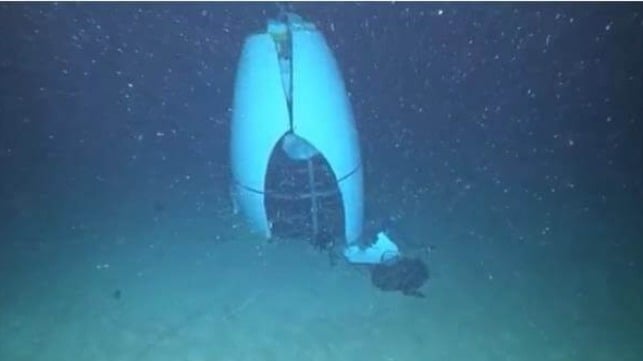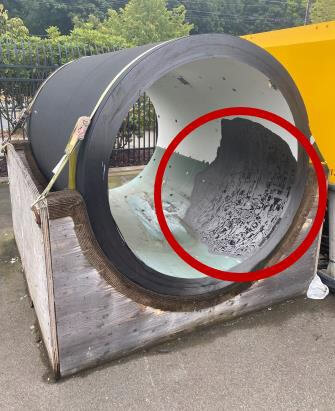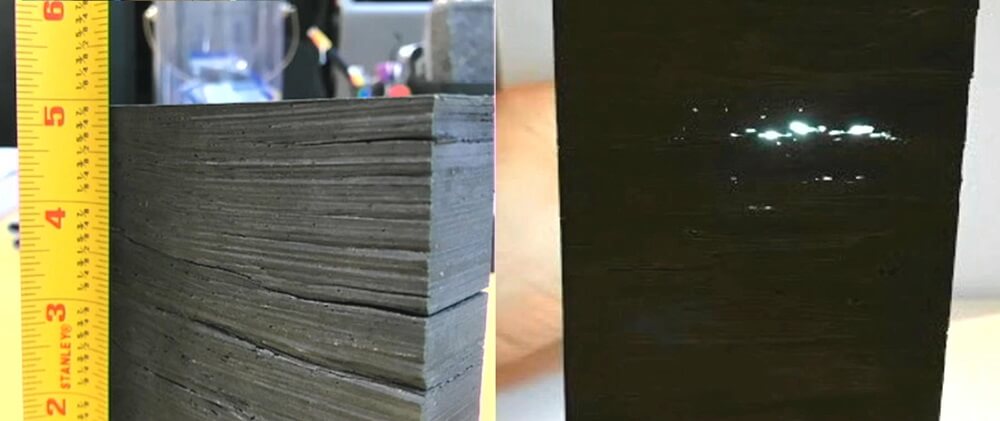Lost Submersible Had a Long List of Failures Before Fatal Dive

When the submersible Titan imploded and sank at the Titanic wreck site in 2023, the U.S. Coast Guard opened a Marine Board of Investigation, the well-resourced form of inquiry it uses for major casualties with multiple loss of life. A team under Jason Neubauer, the former Coast Guard officer who headed the El Faro and Conception inquiries, began taking public testimony Monday - starting with a presentation of the factual information gathered in the opening phase of their investigation.
According to the Coast Guard, Titan accumulated a long list of safety warnings and serious equipment malfunctions in the years leading up to the casualty. The sub partially sank at the pier, ran out of battery power while submerged, overwintered outdoors in Newfoundland, lost its forward dome during a recovery, and failed to drop weights on multiple occasions. The first carbon fiber pressure hull was struck by lightning, developed a visible hull crack and "showed signs of [hull] fatigue" in 2019, and it was replaced in 2020.

Signs of damage on the interior of the original Titan hull, replaced in 2020 (USCG)
In all, the Coast Guard cataloged 118 equipment issues on the final version of the submersible in 2021 and 2022 - and this list only includes signs of trouble that emerged after Titan entered commercial operation.
Long before it entered service, OceanGate employees warned of shortcuts in the engineering and design process. OceanGate had initially worked with the University of Washington's well-regarded Applied Physics Lab on submersible design, but OceanGate's co-founder and CEO - Richard Stockton Rush III, a businessman from a prominent oil and shipping family with roots dating back to the Declaration of Independence - decided to take all engineering in-house in 2016.
"They were going to be changing a lot" on Titan after sidelining APL, testified former marine operations director David Lochridge, who was fired after raising safety concerns. "[It was] arrogance . . . thinking they could do this without proper engineering support."
Rush hired a new head engineer, Tony Nissen, to run the firm's design and construction process. Nissen did not have previous experience with submersible design, Lochridge alleged. He claimed that Nissen hired an engineering team composed of "children that were coming in straight out of university" and dismissed repeated warnings about the capabilities of the sub design.
During construction, Lochridge said that there were visible deficiencies in the one-of-a-kind carbon fiber hull structure. "I knew that hull would fail - it was an absolute mess," he said. "There was so many laminations, so many voids. The imperfections were incredible. There was glue runs everywhere. And that's a red flag."

Lamination flaws in carbon fiber hull section cutoffs from OceanGate's first-gen sub (David Lochridge / USCG)
Two employees have testified that OceanGate recycled structural parts from one submersible in order to build another. "They reused these domes. They reused these ceiling faces. They reused the acrylic. They reused the interior. Everything was reused. It's all cost," said Lochridge.
The firm's former finance director, Bonnie Carl, alleged that a key component mentioned by Lochridge - the acrylic dome at the bow - was only rated to 1,300 meters. Titan was designed for more than 3,000 meters, more than twice that depth. Carl claimed that she was not allowed to see the paperwork showing the component's depth rating because the dome was inadequate to the task. "That was why [engineering director Tony Nissen] didn't want us to see it," she asserted.
Despite internal concerns over design and engineering, Rush decided not to pursue classification or a U.S. Coast Guard COI before beginning commercial passenger operations, Nissen said in testimony Monday. (Taking one passenger on a dive in a submersible requires a Coast Guard COI.)
"One of the days [Rush] was crying on my shoulder, saying [class] would take too long, it's way too expensive, it's ridiculous in his words, it stifles innovation," Nissen said.
Nissen told the board that Rush pressured him to speed up design and construction work, and that Rush made the major decisions on engineering. Nissen said that he had complained to Rush about safety issues many times behind closed doors, but had not kept written records of their disagreements.
Nissen added that he would not make commercial dives in the submersible his engineering team had designed and built, and he did not trust Rush or the marine operations team. "[Rush] wanted me to be the pilot that runs the Titanic missions and I told him 'I'm not getting in it'," Nissen told the board.
Stockton Rush died in the implosion and cannot testify, but in a 2022 conference presentation, he made clear that OceanGate had a commercial purpose and was pushing boundaries.
"These [conventional] research subs that are out there, they were never meant to make money. They were meant to get out there and do cool stuff," Rush told the audience. "[Sub certification programs] are over the top in their rules and regulations, but they had nothing with carbon fiber . . . And I learned that when you're outside the box, it's hard to tell how really far outside the box you are. And we were really pretty far out there."
